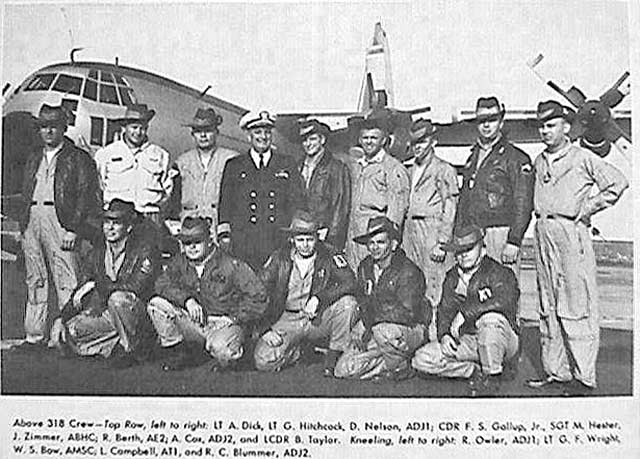Trans-Antarctic flight Melbourne-Pole-Byrd-McMurdo!


from Leo "Soupy" Campbell, AT1 ( plus yummie grilled cheeses')
"Attached is the only picture I have of this historic Transcontinental flight to McMurdo, Antarctica via the South Pole. I can remember the flight took a total of 16 hours in the air, with radar shooting craps about an hour off of Avalon RAAF base just outside of Melbourne, Australia. McMurdo at the time of our ETA was socked in due to a raging storm. The flight proceeded to Byrd Station after dropping mail over the Pole Station. The crew rested and refueled at Byrd and proceeded to McMurdo after the storm had cleared. The crew, (standing) Lt. Dick, C/P: Lt. Hitchcock, P/C; Del Nelson F/E; CDR. Gallup CO; Sgt. Hester, NAV; J. Zimmer, Loadmaster; Berth, AE; Al Cox F/E; and LCDR B. Taylor. (Front Row) Bob Owler F/E; Lt. Wright NAV; Bowman, Metalsmith; Campbell, Radioman: and Blumer AD2 F/E."
This letter from Phillip Law, former director of the Australian Antarctic Program (ANARE) was published in the 4/90 issue of the Polar Record (Scott Polar Research Institute), page 129. Phillip was a passenger on this flight.
Your October issue (Polar Record 25 (155) 359) [October 1989] stated that Giles Kershaw and Dick Smith made the first direct flight from Australia to Antarctica in 1988. I realize this is repeated from the "ANARE News" but thought I should correct it. The first flight was made from Melbourne to Byrd Station by a US Hercules aircraft under the command of Rear Admiral James Reedy, USN, on 30 September 1964. The flight departed from Avalon Airfield, near Melbourne, at 1756 hours. James Reedy had been keen to make the last inter-continental flight that remained unaccomplished and had planned and directed it. Captain of the aircraft was CDR Fred S. Gallup, USN, Commander of Operation Deepfreeze Squadron VX6. He had a crew of six. Two Australians had been invited to participate, the journalist David Burke and myself. Some other US servicemen brought the total to 18.
I had expected the flight to be a routine affair but it turned out to be quite eventful. Arriving over the South Pole but being unable to land because of the low temperature (-85°F) the Hercules dropped mail and fruit to the station and headed for McMurdo. However, the sliding door, opened for the air-drop, jammed and would not close. We shared the inhalation of oxygen from a couple of cylinders as the plane crossed the Queen Maud Mountains.
A radio message then informed us that the weather had closed in at McMurdo, so we changed course for Byrd Station. Arriving there, the nose-ski could not be lowered, and after a half-hour struggle to release it, Gallup decided to land without it. Putting down the heavy Hercules and balancing it on two skis for the length of the runway was a fine job of flying, and it was a very relieved group of men that emerged when, after slewing around when the nose was finally dropped onto the snow, the aircraft came to rest.
The distance flown, 4420 miles, had taken 15 hours 39 minutes, the longest duration in Antarctic aviation history up to that time.
--Phillip Law